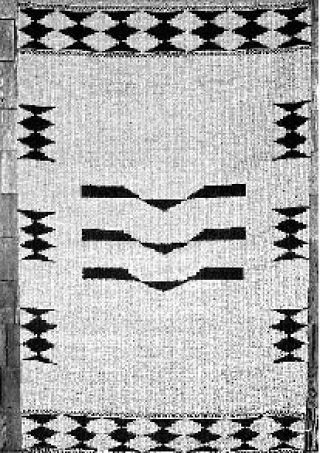“Native Plants, Textiles, Baskets: Inspired by Traditions of the Salish Sea” is the new show opening at Chimera Gallery June 12, and continuing through July 9.
The show includes botanical art by Linda Ann Vorobik, woven and knitted work by Island Fibers artists Debbie Hayward and Maxine Bronstein, hand woven baskets by Lopez guest artist Janet Yang, and cedar bark weaving by the Gobin Family Weavers of the Tulalip Tribes.
On the afternoon of June 12 at the gallery, the Gobin family will demonstrate cedar bark weaving. The show opens at 5 p.m. with a blessing by members of the Tulalip Tribes.
But this information barely begins to tell the story of this exciting and inspiring show. I was fortunate to sit down with Debbie and Maxine recently at their Island Fibers studio and hear about the evolution of this show’s theme and what Debbie and Maxine hope people will gain from the show.
“Eight months of each year, Chimera Gallery features the work of two or three of its member artists,” Debbie explained. “When it came to our turn, we wanted to have a theme that focused our long-time interests: indigenous North American textiles, Lopez wool, the native plants of our immediate environment—in short, the rich traditions and resources of our home.”
Chimera member and botanical artist Linda Ann Vorobik enthusiastically agreed to do the show with them and to illustrate some of the plants used by Coast Salish weavers and dyers.
Linda is a PhD botanist and botanical artist who has been working at her trade for over 30 years and has been extensively published in books such as “The Jepson Manual” (the primary flora for California.)
Debbie and Maxine also wanted to include baskets, always a vital part of the traditional fiber arts, so they invited multi-talented Lopezian Janet Yang to join them. Janet has studied with both Native and non-Native weavers, including Anna Jefferson of the Lummi Nation.
The show was starting to take shape, but still there was a missing piece.
“Sometime later,” Maxine continued, a note of wonder still in her voice, “I was working my day at Chimera, sitting there on a Saturday and spinning. A woman came in and said it reminded her of her grandmother, who was a spinner and knitter. We started to talk. Her name is Patti Gobin, and it turns out she’s a member of the Tulalip Tribes and responsible for the cultural affairs of the tribes, especially ensuring that the traditional arts thrive so they can be passed along to future generations.
“I invited Patti to visit our studio, and when she walked in her mouth dropped open. ‘This is what my family does,’ she said, seeing our weaving, knitting, dye pots, and piles of fleece. Her daughters are knitters and other family members are weavers, with both wool and cedar bark. She suggested we all might have a day of sharing on Lopez. We were so honored.”
In mid-April three generations of Tulalip women met at the Island Fibers studio to share spinning, rug making, and cedar bark weaving. They also walked around the property looking at different plants and found some wild cherry bark for the baskets Judy Gobin, Patti’s cousin, weaves. This sharing “was the connection we had hoped for,” Maxine and Debbie said. “We invited Judy to be a guest artist in the Chimera show, and she graciously agreed, even though she is busy preparing work for the Indian Market in Santa Fe this August.” Looking back on this day, Maxine smiled as she remembered Patti Gobin telling them: “The Creator is kind. This meeting was not an accident.”
As visitors to the gallery admire the artists’ work, Debbie and Maxine hope that they will “take away a greater awareness of the plants and people who have been here for a long time.” They’d like people to be inspired to look around their environment “with gratitude and appreciation for the great bounty of the natural world we are all part of.”
Speaking of their own work, they said, “We’re not attempting to duplicate Coast Salish work, but to understand and learn the traditional techniques. It’s that we’ve been inspired by this tradition and spring off from it. We want to put our hearts into making something that people can use and love for a really long time and can pass down. We are just passing through, and something is passing through us that needs to continue.”



